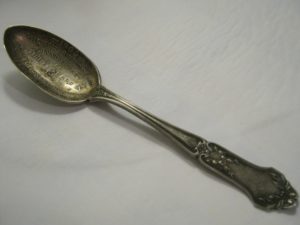 She came to this place for the first time, to a cabin overlooking the lake, when she was not quite twenty. She was with a family she had known all her life. A few years later, she would marry their son. Since that day, she had returned, first with their children, then the grandchildren and finally with the first few of what would soon be many great-grandchildren. She was my aunt, my mother’s sister.
She came to this place for the first time, to a cabin overlooking the lake, when she was not quite twenty. She was with a family she had known all her life. A few years later, she would marry their son. Since that day, she had returned, first with their children, then the grandchildren and finally with the first few of what would soon be many great-grandchildren. She was my aunt, my mother’s sister.
This morning, I sit in another cabin, looking out at the same lake, and remember a particular day many years ago when all but one of the female descendants of her mother and my grandmother came back to this place. We had each grabbed a cup of tea, pulled up ancient rocking chairs and sat in a circle on the old porch. I believe it was the first time since our grandparents’ death that we had all been together: my 90 year old aunt who had always been the family matriarch, three of us in late middle age, our four thirty-something daughters and a couple of little girls, the great-grands.
The gathering was something like a ritual. There were votive candles on a table in the middle and each of us had arrived with an item that connected us with our family. I have no memory of what I brought or what it signified. Nor do I remember most of the others, except that each had particular meaning for that person. But one I do remember. It has stayed with me all these years. Because it captured the essence of our grandparents’ legacy in a way no words could have done.
My cousin’s daughter brought it: a small silver cup, engraved with her initials. It told a story of a family that would do something like that; give a sterling silver cup to a toddler who could care less and probably never used it. Nevertheless, it was “the thing to do” for a child born with the proverbial silver spoon in her mouth. We all recognized it; it looked just like ours.
But, more than that, what it said so eloquently, was the fact that it was tarnished, inside and out. That made it real for me. For it spoke of things I was never permitted to voice in my family of origin. Things that were not pretty, not bright and shiny like silver: messy emotions, strong feelings, untidy thoughts. The polished silver was always on the table but “our emotions kept firmly out of sight.” (A. Horwitz) . Along with the fond memories of ice cream drenched in hot fudge sauce at Sunday dinner, secret passages in our grandparents’ big house and many happy hours in the fairy tale playhouse in the woods, it was even more important to recognize and to speak of the underside; the things unsaid and the tears unshed that led too often to heartache, illness and tragedy.
When we ended our time together, someone pointed to the table. Unnoticed by the “grown-ups,” the young girls had been molding the melting wax into a delightful, flowing wavelike pattern. The candles had gone out, leaving a beautiful new creation. I like to think that it was a metaphor for what we had shared and what was to come. The old had been burned away so something new could begin. And what better hands to shape it than the youngest ones.

4 Responses
Totally lovely Polly. Thanks so much for this poignant offering. So much truth in the unraveling. And what a beautiful ending.
Thank you again, dear Polly. You help me deepen my awareness. God is with you and Keith.
Polly, thanks for reminnding me of how powerful silence and reflection can be in shaping my future with new insights and appreciation.
Superb metaphor, the toddler’s tarnished silver cup.